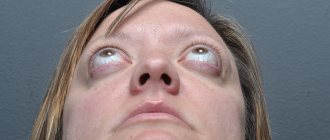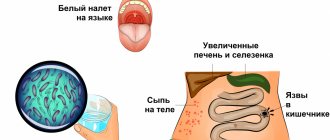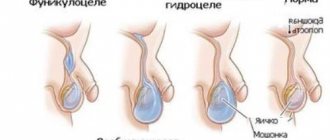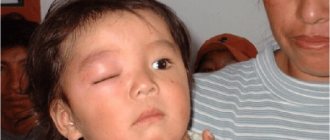Published: 07/27/2021 12:30:00 Updated: 07/27/2021
Tuberculosis is an infectious disease caused by Koch's bacillus (Mycobacterium tuberculosis). The pathogen most often affects the lungs, but there are other forms: tuberculosis of bones, joints, kidneys, skin and other organs.
The mortality rate from tuberculosis around the world is high, it is one of the top ten diseases leading to death [1]. This is not only a medical, but also a social problem, since morbidity, in addition to health status, is also influenced by social and economic reasons, quality of nutrition and lifestyle. Key risk factors include bad habits, a weakened immune system and chronic stress.
How is tuberculosis transmitted?
The pathogen is transmitted from person to person by airborne droplets during sneezing and coughing and simply by talking, and also sometimes by contact (through damaged skin or in utero).
Tuberculosis bacteria remain active for a long time in the external environment in a poorly ventilated area and enter the body of a healthy person through household items and food. Infection with tuberculosis does not yet mean the onset of the disease: it develops only in 5-15% of those infected.
It may take several weeks or months for the first symptoms to develop, and the main risk factor is considered to be a weakened immune system [1].
Classification of tuberculosis
This disease is classified according to many parameters. First of all, tuberculosis can be primary (newly occurring) and secondary (re-infection). According to the degree of contagiousness of tuberculosis, two forms are distinguished:
- open form (the patient actively releases mycobacteria into the air and infects other people);
- closed form (the patient is a carrier and does not release the pathogen into the environment).
According to the course of the disease, tuberculosis is divided into three stages:
- primary infection with local inflammation in the area of penetration and involvement of nearby lymph nodes;
- latent period with the formation of foci of inflammation in other organs;
- active infection with deterioration in general health, the formation of cavities in the lungs and multiple lesions in other organs [2].
Symptoms of tuberculosis
Signs of infection vary depending on the organ affected by the mycobacterium.
Common symptoms include fatigue, decreased ability to work, poor appetite, fever, weight loss, and flushed cheeks. The following main symptoms are characteristic of pulmonary tuberculosis in adults:
- persistent cough for several weeks (dry or wet);
- hemoptysis;
- chest pain;
- labored breathing;
- enlargement of peripheral lymph nodes (in the head, neck and extremities);
- night sweats;
- periodic increase in temperature.
Secondary (repeated) infection occurs chronically in the form of a mild allergy, since the patient already has anti-tuberculosis immunity.
Clinical signs of tuberculosis in children develop faster and are more pronounced. The risk of infection in this group of patients is higher. This is due to age-related structural features of organs and the instability of the child’s immunity to aggressive infections. In addition to “adult” symptoms, children also experience moodiness, tearfulness, unreasonable restlessness and sleep disturbances.
Diagnosis of tuberculosis
This disease, especially the closed form, is difficult to diagnose.
The transition from the latent phase to the active phase is blurred, and clinical symptoms do not allow an accurate diagnosis to be made or are absent. In this regard, laboratory diagnosis is crucial. Mantoux test (or tuberculin test). To carry out this classic test for tuberculosis, the patient is injected subcutaneously in the forearm with purified tuberculin, a mixture of proteins characteristic of mycobacteria. The immunological response is assessed after 48-72 hours based on the diameter of the papule (nodule above the surface of the skin) or area of redness at the site of tuberculin injection. In people not infected with the bacterium, papules do not form or their sizes are small. The main disadvantages of the method include tuberculin intolerance and a false positive reaction in people vaccinated against tuberculosis with the BCG vaccine.
Quantiferon test for tuberculosis. This modern immunological method makes it possible to detect latent tuberculosis, as well as tuberculosis damage to other organs. No tuberculin administration is required, so this test is suitable for vulnerable groups of patients (pregnant and lactating women, elderly people, HIV-infected people, people with tuberculin intolerance). Venous blood is used for diagnosis. The presence of active tuberculosis in the body causes the appearance in the blood of special proteins that are part of mycobacteria. T lymphocytes react to the presence of these proteins and, as a result of such sensitization, begin to intensively produce interferon-gamma. The quantiferon test is based on measuring the level of interferon-gamma, an increase in which indicates the presence of tuberculosis infection in a blood sample.
T-SPOT.TB method. Allows you to diagnose latent and active forms of pulmonary and extrapulmonary tuberculosis. Venous blood is used for research. The method is based on assessing the number of sensitized T-lymphocytes themselves. It also does not produce false positive results and is suitable for vulnerable patient groups.
Sputum analysis. To carry out the test, you need to collect morning sputum, which is released when you cough. The sample taken is determined for the presence of mycobacteria themselves. The test is only suitable for diagnosing pulmonary tuberculosis.
Analysis of urine. Changes in parameters characteristic of tuberculosis are detected: the appearance of leukocytes, red blood cells, bacteria, protein, pus, a shift in the urine reaction to the acidic side.
Negative laboratory tests do not guarantee the absence of tuberculosis. Patients with suspected disease undergo fluorography and/or chest x-ray. To identify extrapulmonary forms of tuberculosis, MRI, CT and other instrumental studies are performed. A biopsy (taking a tissue sample) is also used for microscopic examination and culture on nutrient media.
Differential diagnosis is carried out with a wide range of diseases in cases where no study has confirmed the presence of mycobacteria, atypical symptoms are present, or there is no adequate response to anti-tuberculosis treatment.
Clinic from scratch
Tuberculosis in children and adolescents is a global problem throughout the world. The situation in the fight against tuberculosis infection is worsening due to a decrease in children's resistance to infectious diseases, as well as frequent contacts of children with sick adults.
Tuberculosis is an insidious infection
Infection occurs from person to person through airborne droplets during talking, coughing and sneezing; through household items, food, through any things where the bacteria has settled. Tuberculosis is an infection that affects absolutely any segment of the population, people of different ages and genders. Children are at particular risk. Children can become infected with the bacteria on playgrounds, on public transport, in shops, as well as from a sick relative or friends. The insidiousness of this disease is that it does not manifest itself in any way for a very long time, and symptoms appear only with irreversible changes in the body.
The disease affects all human organs, but most often the bacterium settles in the bronchopulmonary system. The disease is caused by Mycobacterium tuberculosis, or Koch's bacillus, named after Robert Koch, who discovered the causative agent of tuberculosis in 1882. Mycobacterium tuberculosis is very active and resistant to the external environment; it lives for a long time in the soil and in dried saliva.
Infection with Koch's bacillus occurs in childhood. According to statistics, of all infected people, every tenth person can get sick. For most people who are infected, the immune system will suppress the disease, and therefore they will never develop tuberculosis.
Children at risk for tuberculosis:
- from families where a person with tuberculosis lives;
- often and for a long time suffering from viral and infectious diseases;
- children with nonspecific diseases: diabetes, cancer, HIV infection, chronic organ diseases;
- unvaccinated children.
Manifestation of tuberculosis in children and adolescents
It can be quite difficult to suspect the symptoms of the disease. Children's mood often changes and weakness appears. Toxic substances released by mycobacteria are fixed in the lymph nodes and cause exhaustion. Children begin to lose weight and get tired quickly. Periodically, the temperature can rise to 37.5 degrees, and in children the lymph nodes become enlarged. Tuberculin tests will show a positive result. During this period, chronic tuberculosis intoxication will develop. By noticing this condition in a patient in a timely manner, you can prescribe appropriate treatment and greatly alleviate the condition.
Bronchial tuberculosis
Mycobacteria, along with the bloodstream, penetrate the bronchi and create inflammatory foci in the bronchial glands. The disease will manifest itself as a viral infection, accompanied by fever and cough. But the duration of this condition will be much longer than the course of ARVI. During this period, children develop general signs of intoxication: weakness, changes in mood, as the disease progresses, loss of body weight, pallor of the skin.
Pulmonary tuberculosis
In pulmonary tuberculosis, the infection affects the lungs and is accompanied by fever. The pulmonary form is much more complex and longer than the bronchial form, but even here, with proper and timely treatment, positive prognosis is possible. In rare cases, this form of the disease can lead to the breakdown of lung tissue and the formation of new foci of infection.
Tuberculosis of lymph nodes
When the infection affects the lymph nodes, they increase in size. Often pus accumulates in the lymph nodes, which can leak out, forming fistulas. With this form of the disease, the infection can affect the skin, forming subcutaneous tumors - scrofuloderma, which also increase in size and the resulting pus comes out, forming a fistula.
Bone tuberculosis
Bone tuberculosis develops over a long period of time and affects those bones in which the vascular network is well developed. This form of infection is manifested by pain in the area of the affected bones and changes in the joints. Over time, stiffness of movement and lameness develop.
Tuberculosis of the meninges - tuberculous meningitis
Tuberculous meningitis is the most severe form of the disease. Most often found in young children. Symptoms of the disease are headaches, drowsiness, and loss of appetite. Next comes fever, confusion, and convulsions. With this form, irreversible consequences are possible.
Signs of infection in children and adolescents:
- weight loss, fatigue and weakness, periodic fever;
- rapid development of fever, lasting for three weeks;
- persistent cough with wheezing during breathing, cough with sputum, lasting more than three weeks;
- shortness of breath after minor physical exertion;
- enlarged abdomen, ascites;
- sweating at night;
- curvature of the spine, stiffness when moving and bending, lameness, joint pain;
- enlarged lymph nodes, pain, formation of purulent abscesses;
- fistula formation;
- headache, vomiting, mood swings, high fever;
- long recovery after colds;
- blood in urine.
These signs require immediate consultation with pediatric specialists.
Diagnosis of tuberculosis in children and adolescents
For timely detection of infection, it is necessary to carry out diagnostics annually. The main methods for detecting infection are tuberculin diagnostics and fluorography. Fluorography refers to an x-ray research method and is recommended for annual examination in adults and adolescents from the age of 15. Tuberculin diagnostics is the most common way to detect tuberculosis in children and adolescents. The main methods of such diagnostics are the Mantoux test and Diaskintest.
Vaccinated children undergo a tuberculin test annually, starting at 12 months. Unvaccinated babies are seen by specialists twice a year. In vaccinated or already infected children, irritation occurs at the site of the test, which shows the body’s reaction to the infectious pathogen. The result is assessed by the size of irritation from the tuberculin test.
Mantoux test
In children from one year to 7 years old, the Mantoux test is used for tuberculin diagnostics. To carry it out, tuberculin is administered, and then after 72 hours the body’s reaction is assessed. A slight redness forms at the injection site, the size of which is compared with normal values.
Mantoux test evaluation:
- negative reaction – diameter of hyperemia 0-1 mm;
- doubtful - the formation of papules measuring 2-4 mm or hyperemia of any size;
- positive – presence of papules (buttons) 5 mm or more;
- hyperergic reaction - a papule larger than 17 mm or a papule of any size with the formation of a vesicle (a cavity with a liquid substance).
In order not to affect the results, it is not recommended to touch the injection site and apply various creams and cosmetics to it.
Diaskintest
Diaskintest is an innovative diagnostic method that has been used since 2009 in children aged 8 to 17 years. Diaskintest is carried out independently, or it is carried out in conjunction with the Mantoux test for a more accurate diagnosis of tuberculosis.
Diaskintest is an accurate and informative type of tuberculin diagnostics. Unlike Mantoux, it does not give false-positive results and has higher sensitivity and information content than tuberculin. Carrying out and evaluating the results of Diaskintest is similar to the Mantoux test. But a positive and questionable Diaskintest result, even with good tests and fluorography, will always indicate that the child needs further examination for tuberculosis.
Diaskintest is injected under the skin on the inner surface of the forearm. After injection, a papule (button) measuring about 5 mm is formed. The sample is assessed after 72 hours using a ruler.
Diaskintest assessment:
- negative reaction - only a trace of the injection is present on the skin;
- doubtful – there is hyperemia of any size at the injection site, but no papule;
- positive – the presence of a papule of any size.
A positive or questionable result is a direct indication for additional examination for tuberculosis.
Diaskintest is an absolutely harmless diagnostic method. Before administering Diaskintest, you do not need to take antihistamines. After the procedure, you are allowed to swim and walk, but you do not need to rub or apply any products to the injection site.
Tuberculin and Diaskintest do not contain live tuberculosis bacteria and therefore, after diagnosis with these drugs, you cannot get sick.
Preventive measures in the fight against tuberculosis infection
It is extremely important to know what we can do to combat an epidemic like tuberculosis:
- BCG vaccination is carried out in accordance with the National Vaccination Calendar and allows you to build immunity against tuberculosis, effectively protecting babies. Newborns are vaccinated on days 3-7 of life in the maternity hospital. Children with contraindications are vaccinated later at their place of residence. Revaccination is carried out for children aged seven years, subject to a negative Mantoux test;
- For timely detection of tuberculosis, adolescents and adults should undergo fluorography annually. Such an examination will help to timely identify the development of the disease in adults, and therefore reduce the risk of infection in children living with the patient;
- high-quality treatment of the patient, isolation during his recovery in hospital, protects all family members from infection;
- An early method of diagnosing tuberculosis is performed using annual tuberculin testing. Using the Mantoux and Diaskintest tests, children infected with mycobacteria are identified for further examination and preventive measures. Early identification of infected individuals makes it possible to begin preventive treatment earlier, and therefore reduces the risk of developing the disease in the future.
Personal prevention includes:
- healthy lifestyle for the whole family;
- physical development and activity of children;
- balanced diet enriched with vitamins and microelements;
- prevention and adequate treatment of ARVI and other infectious diseases;
- timely treatment of chronic diseases;
- it is necessary to protect children from contact with a patient with tuberculosis and a person who coughs for a long time;
- it is important to protect children from large crowds of people;
- prevention of bad habits (smoking, alcohol) and drug addiction in the younger generation.
Dear parents, do not forget about preventive measures: a healthy lifestyle, hardening, walks in the fresh air, proper nutrition, giving up bad habits and positive emotions strengthen the immune system, and therefore increase the body’s defenses in the fight against tuberculosis. Remember that timely vaccination, annual testing and prevention will help protect your family from this terrible disease! Be healthy and take care of your loved ones!
Treatment of tuberculosis
Tuberculosis is curable in its early stages. Complex and continuous therapy is required depending on the affected organ, the state of the immune system and the stage of the disease:
- Drug therapy. Anti-tuberculosis drugs are divided into main (prescribed to patients with primary infection), reserve (prescribed when the drugs of the main group are ineffective or intolerant) and combination (multicomponent drugs with a fixed dose of individual components).
- Chemotherapy. Aimed at destroying mycobacteria or suppressing their reproduction.
- Symptomatic treatment of specific disorders and symptoms.
- Physiotherapy for pulmonary tuberculosis in order to improve tissue nutrition and stimulate their recovery (inhalation, aromatherapy, electrotherapy, laser therapy, darsonvalization, magnetic therapy) [3].
In advanced stages of tuberculosis, surgery is performed to remove the affected organ or part of it (lobe of the lung, ureters, nephrectomy).
Complete recovery does not guarantee the absence of recurrence of the disease in the future.
What to do if you have been diagnosed with pulmonary tuberculosis?
- DO NOT PANIC! In most cases, the disease can be cured with the help of modern highly effective drugs;
- Treatment of pulmonary tuberculosis with folk remedies without the use of special anti-tuberculosis drugs is UNACCEPTABLE! None of the folk remedies can cure tuberculosis; for this purpose, special highly effective anti-tuberculosis drugs (antibiotics and antimicrobial drugs) have been developed. Treatment of pulmonary tuberculosis only with folk remedies can lead to death. A clear, but at the same time sad example is famous people of the 19th and 20th centuries. (Chekhov, Perov, Belinsky, Kustodiev, Kafka, Napoleon II Bonaparte, Vivien Leigh, etc.), who died from this disease due to the lack of highly effective anti-tuberculosis drugs at that time;
- Strictly follow all treatment recommendations of a phthisiatrician (a doctor who treats tuberculosis).
Prevention of tuberculosis
It is impossible to completely protect yourself from contact with possible spreaders of tuberculosis, so general rules of prevention come first:
- regular medical examinations (primarily annual fluorography of the lungs);
- vaccination (BCG vaccine);
- strengthening the immune system;
- control of chronic diseases;
- healthy lifestyle and daily routine;
- good living environment (proper humidity, temperature and air ventilation);
- maintaining hygiene.
Who is at risk for developing active tuberculosis?
The following groups of people are most susceptible to the disease:
- persons without a fixed place of residence;
- released from prison;
- living in shelters, boarding schools for the elderly;
- refugees, migrants;
- patients of drug treatment and psychiatric institutions.
There is a high probability of developing tuberculosis in people with chronic diseases of the respiratory system and cardiovascular system; receiving treatment with drugs that weaken the immune system; patients with diabetes mellitus, alcoholism, drug addiction; infected with HIV and patients with AIDS.










